 W
WDigital television (DTV) is the transmission of television audiovisual signals using digital encoding, in contrast to the earlier analog television technology which used analog signals. At the time of its development it was considered an innovative advancement and represented the first significant evolution in television technology since color television in the 1950s. Modern digital television is transmitted in high definition (HDTV) with greater resolution than analog TV. It typically uses a widescreen aspect ratio in contrast to the narrower format of analog TV. It makes more economical use of scarce radio spectrum space; it can transmit up to seven channels in the same bandwidth as a single analog channel, and provides many new features that analog television cannot. A transition from analog to digital broadcasting began around 2000. Different digital television broadcasting standards have been adopted in different parts of the world; below are the more widely used standards:Digital Video Broadcasting (DVB) uses coded orthogonal frequency-division multiplexing (OFDM) modulation and supports hierarchical transmission. This standard has been adopted in Europe, Africa, Asia, and Australia, for a total of approximately 60 countries. Advanced Television System Committee (ATSC) uses eight-level vestigial sideband (8VSB) for terrestrial broadcasting. This standard has been adopted by 9 countries: the United States, Canada, Mexico, South Korea, Bahamas, Jamaica, the Dominican Republic, Haiti and Suriname. Integrated Services Digital Broadcasting (ISDB) is a system designed to provide good reception to fixed receivers and also portable or mobile receivers. It utilizes OFDM and two-dimensional interleaving. It supports hierarchical transmission of up to three layers and uses MPEG-2 video and Advanced Audio Coding. This standard has been adopted in Japan and the Philippines. ISDB-T International is an adaptation of this standard using H.264/MPEG-4 AVC, which has been adopted in most of South America and Portuguese-speaking African countries. Digital Terrestrial Multimedia Broadcasting (DTMB) adopts time-domain synchronous (TDS) OFDM technology with a pseudo-random signal frame to serve as the guard interval (GI) of the OFDM block and the training symbol. The DTMB standard has been adopted in China, including Hong Kong and Macau. Digital Multimedia Broadcasting (DMB) is a digital radio transmission technology developed in South Korea as part of the national IT project for sending multimedia such as TV, radio and datacasting to mobile devices such as mobile phones, laptops and GPS navigation systems.
 W
W4DTV is a proprietary broadcasting standard and technology for digital cable broadcasting and C-band/Ku-band satellite dishes from Motorola, using General Instrument's DigiCipher II for encryption. It can tune in both analog VideoCipher 2 and digital DCII satellite channels.
 W
WThe Advanced Television Systems Committee (ATSC) is an international, nonprofit organization developing technical standards for digital terrestrial television and data broadcasting. ATSC's 120-plus member organizations represent the broadcast, broadcast equipment, motion picture, consumer electronics, computer, cable, satellite and semiconductor industries.
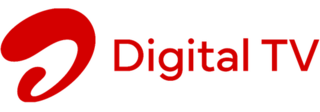 W
WBharti Telemedia Limited, doing business as Airtel digital TV, is an Indian direct-broadcast satellite service provider owned and operated by Bharti Airtel. Its satellite service, launched in October 2008, transmits digital satellite television and audio to households in India. It has a total subscriber base of 10.07 million as of 30 March 2015.
 W
WThe All-Channel Receiver Act of 1962 (ACRA), commonly known as the All-Channels Act, was passed by the United States Congress in 1961, to allow the Federal Communications Commission to require that all television set manufacturers must include UHF tuners, so that new UHF-band TV stations could be received by the public. This was a problem at the time since most affiliated stations of the Big Three television networks were well-established on VHF, while many local-only stations on UHF were struggling for survival.
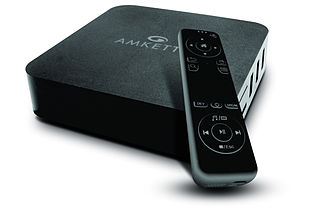 W
WEvoTV is a range of digital media players developed by Amkette that brings internet and web2.0 features to the television. EvoTV was envisioned to be a substitute to the growing range of Smart TVs in the market. Instead of replacing complete television sets to get Internet-based features users could just connect an EvoTV and get the same features at a much lower cost. EvoTV is based on the Android operating system, can connect to the internet wirelessly, and can stream local, network and internet media and audio files. Once connected users can access Android Playstore Apps using EvoTV on their television. The first EvoTV was launched in the middle of 2012 and received many positive reviews and awards. In 2013 Amkette EvoTV won the NDTV Gadget Award for the Best Consumer Electronic. In 2014 two news versions of EvoTV were introduced bringing the total variants to five.
 W
WAsynchronous Serial Interface, or ASI, is a method of carrying an MPEG Transport Stream (MPEG-TS) over 75-ohm copper coaxial cable or optical fiber. It is popular in the television industry as a means of transporting broadcast programs from the studio to the final transmission equipment before it reaches viewers sitting at home.
 W
WAn ATSC tuner, often called an ATSC receiver or HDTV tuner, is a type of television tuner that allows reception of digital television (DTV) television channels that use ATSC standards, as transmitted by television stations in North America, parts of Central America, and South Korea. Such tuners are usually integrated into a television set, VCR, digital video recorder (DVR), or set-top box which provides audio/video output connectors of various types.
 W
WBasic Interoperable Scrambling System, usually known as BISS, is a satellite signal scrambling system developed by the European Broadcasting Union and a consortium of hardware manufacturers.
 W
WBBC Red Button is a branding used for digital interactive television services provided by the BBC, and broadcast in the United Kingdom. The services replaced Ceefax, the BBC's analogue teletext service. BBC Red Button's text services were due to close on 30 January 2020, but the switch off was suspended on 29 January 2020 following protests.
 W
WBoxee was a cross-platform freeware HTPC software application with a 10-foot user interface and social networking features designed for the living-room TV. It enabled its users to view, rate and recommend content to their friends through many social network services and interactive media related features.
 W
WCableCARD is a special-use PC Card device that allows consumers in the United States to view and record digital cable television channels on digital video recorders, personal computers and television sets on equipment such as a set-top box not provided by a cable television company. The card is usually provided by the local cable operator, typically for a nominal monthly fee.
 W
WIn telecommunications, the (digital) cliff effect or brickwall effect is a sudden loss of digital signal reception. Unlike analog signals, which gradually fade when signal strength decreases or electromagnetic interference or multipath increases, a digital signal provides data which is either perfect or non-existent at the receiving end. It is named for a graph of reception quality versus signal quality, where the digital signal "falls off a cliff" instead of having a gradual rolloff. This is an example of an EXIT chart.
 W
WConax develops television encryption, conditional access and content security for digital television. Conax provide CAS technology to pay TV operators in 85 countries. The company has offices in Norway (headquarters), Russia, Germany, Brazil, the United States, Canada, Mexico, Indonesia, Philippines, Thailand, China, Singapore, and India, with a 24/7 Global Support Center in India.
 W
WA content delivery network, or content distribution network (CDN), is a geographically distributed network of proxy servers and their data centers. The goal is to provide high availability and performance by distributing the service spatially relative to end users. CDNs came into existence in the late 1990s as a means for alleviating the performance bottlenecks of the Internet as the Internet was starting to become a mission-critical medium for people and enterprises. Since then, CDNs have grown to serve a large portion of the Internet content today, including web objects, downloadable objects, applications, live streaming media, on-demand streaming media, and social media sites.
 W
WIn television encryption, Cryptoworks is a DVB conditional access system, developed by Philips CryptoTec but now belonging to Irdeto.
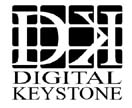 W
WDigital Keystone, Inc. develops digital entertainment technologies that bridge Pay TV with the new digital home. DK solutions include security and navigation software. Digital Keystone also develops industry-standard validation tools for development, certification, and manufacturing. DK technologies enable content access throughout the entire home, offering security, interactive services, and device connectivity.
 W
WThe digital television transition, also called the digital switchover (DSO), the analogue switch-off (ASO), the digital migration, or the analogue shutdown, is the process in which older analogue television broadcasting technology is converted to and replaced by digital television. Conducted by individual nations on different schedules, this primarily involves the conversion of analogue terrestrial television broadcasting infrastructure to digital terrestrial (DTT), a major benefit being extra frequencies on the radio spectrum and lower broadcasting costs, as well as improved viewing qualities for consumers.
 W
WA digital television adapter (DTA), commonly known as a converter box or decoder box, is a television tuner that receives a digital television (DTV) transmission, and converts the digital signal into an analog signal that can be received and displayed on an analog television set. Some also have an HDMI output since some TVs with HDMI do not have a digital tuner. The input digital signal may be over-the-air terrestrial television signals received by a television antenna, or signals from a digital cable system. It normally does not refer to satellite TV, which has always required a set-top box either to operate the big satellite dish, or to be the integrated receiver/decoder (IRD) in the case of direct-broadcast satellites (DBS).
 W
WThe digital television transition, also called the digital switchover (DSO), the analogue switch-off (ASO), the digital migration, or the analogue shutdown, is the process in which older analogue television broadcasting technology is converted to and replaced by digital television. Conducted by individual nations on different schedules, this primarily involves the conversion of analogue terrestrial television broadcasting infrastructure to digital terrestrial (DTT), a major benefit being extra frequencies on the radio spectrum and lower broadcasting costs, as well as improved viewing qualities for consumers.
 W
WDigital Video Broadcasting (DVB) is a set of international open standards for digital television. DVB standards are maintained by the DVB Project, an international industry consortium, and are published by a Joint Technical Committee (JTC) of the European Telecommunications Standards Institute (ETSI), European Committee for Electrotechnical Standardization (CENELEC) and European Broadcasting Union (EBU).
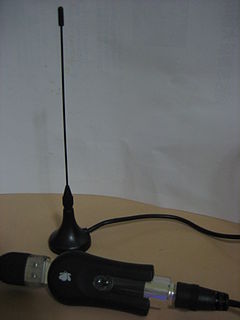 W
WA DTV receiver is a set-top box that permits the reception of digital television. Its components are very similar to a desktop PC. The DTV receiver is a vital link in the chain of television system. The goal of a broadcasting system is to concentrate the hardware requirements at the source to simplify the receivers and makes it as inexpensive as possible.
 W
WDVB 3D-TV is a new standard that partially came out at the end of 2010 which included techniques and procedures to send a three-dimensional video signal through actual DVB transmission standards. Currently there is a commercial requirement text for 3D TV broadcasters and Set-top box manufacturers, but no technical information is in there.
 W
WElectronic programming guides (EPGs) and interactive programming guides (IPGs) are menu-based systems that provide users of television, radio and other media applications with continuously updated menus that display scheduling information for current and upcoming broadcast programming. Some guides also feature backward scrolling to promote their catch up content. They are commonly known as guides or TV guides.
 W
WERT Digital was a pilot project by ERT, the public broadcaster of Greece. It was the first legal attempt at digital television broadcasting in Greece, featuring four new channels: Cine+, Prisma+ Sport+ and Info+. It was officially launched in early 2006 as part of the digital television transition mandated by the European Union. The project was funded through ERT's budget and had no advertising.
 W
WFreeview is New Zealand's free-to-air television platform. It is operated by a joint venture between the country's major free-to-air broadcasters – government-owned Television New Zealand and Radio New Zealand, government-subsidised Māori Television, and the American-owned Discovery New Zealand. It consists of a HD-capable digital terrestrial television service, to around 86% of the population in the major urban and provincial centres of New Zealand, and a standard-definition satellite television service, called Freeview Satellite, covering the whole of mainland New Zealand and the major offshore islands. Freeview uses the DVB-S and DVB-T standards on government-provided spectrum.
 W
WGinga is the middleware specification for the Nipo-Brazilian Digital Television System. Ginga is also ITU-T Recommendation for IPTV Services. It is also considered in ITU-T recommendations for Cable Broadcast services and for Terrestrial Broadcast services by ITU-R BT.1889, ITU-R BT.1699 and ITU-R BT.1722. Ginga was developed based on a set of standardized technologies but mainly on innovations developed by Brazilian researchers. Its current reference implementation was released under the GPL license.
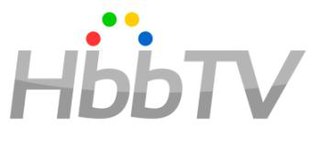 W
WHybrid Broadcast Broadband TV (HbbTV) is both an industry standard and promotional initiative for hybrid digital TV to harmonise the broadcast, IPTV, and broadband delivery of entertainment to the end consumer through connected TVs and set-top boxes. The HbbTV Association, comprising digital broadcasting and Internet industry companies, has established a standard for the delivery of broadcast TV and broadband TV to the home, through a single user interface, creating an open platform as an alternative to proprietary technologies. Products and services using the HbbTV standard can operate over different broadcasting technologies, such as satellite, cable, or terrestrial networks.
 W
WIceTV is an Australian company providing an independently curated Electronic Program Guide (EPG) for digital free-to-air television. It also produces Smart Recording Software.
 W
WInternet Protocol television (IPTV) is the delivery of television content over Internet Protocol (IP) networks. This is in contrast to delivery through traditional terrestrial, satellite, and cable television formats. Unlike downloaded media, IPTV offers the ability to stream the source media continuously. As a result, a client media player can begin playing the content almost immediately. This is known as streaming media.
 W
WInview Technology is a UK-based digital TV software company. It specialises in advanced EPGs, interactive broadcast, IP services and solutions for Pay-TV and analogue switch off markets. Their OTT TV platform allows television broadcast and internet content to be simultaneously accessible to the viewer. The company is based in Northwich, Cheshire, UK and is privately owned.
 W
WLadram Bay is a secluded bay with a pebble beach, on the south coast of Devon, England between the coastal towns of Budleigh Salterton and Sidmouth. It is about 11 miles southeast of Exeter, just under 2 mi (3 km) southwest of Sidmouth and about 2+1⁄2 miles (4 km) northeast of Budleigh Salterton.
 W
WMEO is a mobile and fixed telecommunications service and brand from Altice Portugal, managed by MEO - Serviços de Comunicações e Multimédia. The service was piloted in Lisbon in 2006 and was later extended to Porto and Castelo Branco.
 W
WMobile television is television watched on a small handheld or mobile device. It includes service delivered via mobile phone networks, received free-to-air via terrestrial television stations, or via satellite broadcast. Regular broadcast standards or special mobile TV transmission formats can be used. Additional features include downloading TV programs and podcasts from the Internet and storing programming for later viewing.
 W
WMoxi was a line of high-definition digital video recorders produced by Moxi Digital Digeo, and Arris Group. Moxi was originally released only to cable operators, but in December 2008 it was released as a retail product. Moxi was removed from the market in November 2011. The former retail product, the Moxi HD DVR, provides a high-definition user interface with support for either two or three CableCARD TV tuners. Arris also offered a companion appliance, the Moxi Mate, which can stream live or recorded TV from a Moxi HD DVR.
 W
WIn telecommunications and computer networks, multiplexing is a method by which multiple analog or digital signals are combined into one signal over a shared medium. The aim is to share a scarce resource. For example, in telecommunications, several telephone calls may be carried using one wire. Multiplexing originated in telegraphy in the 1870s, and is now widely applied in communications. In telephony, George Owen Squier is credited with the development of telephone carrier multiplexing in 1910.
 W
WNagra is a brand of portable audio recorders produced from 1951 in Switzerland. Beginning in 1997 a range of high-end equipment aimed at the audiophile community was introduced, and Nagra expanded the company’s product lines into a new marketplace.
 W
WNagravision is a company of the Kudelski Group that develops conditional access systems for digital cable and satellite television. The name is also used for their main products, the Nagravision encryption systems.
 W
WP2PTV refers to peer-to-peer (P2P) software applications designed to redistribute video streams in real time on a P2P network; the distributed video streams are typically TV channels from all over the world but may also come from other sources. The draw to these applications is significant because they have the potential to make any TV channel globally available by any individual feeding the stream into the network where each peer joining to watch the video is a relay to other peer viewers, allowing a scalable distribution among a large audience with no incremental cost for the source.
 W
WPixel aspect ratio is a mathematical ratio that describes how the width of a pixel in a digital image compares to the height of that pixel.
 W
WPlayTV is an add-on unit for the PlayStation 3 (PS3) video game console allowing the PS3 to act as an HDTV or DTV receiver as well as a digital video recorder (DVR) for recording television programmes to the hard drive for later viewing. It is a twin-channel DVB-T tuner and was released in some territories with active DVB-T broadcasts.
 W
WThe Program and System Information Protocol (PSIP) is the MPEG and privately defined program-specific information originally defined by General Instrument for the DigiCipher 2 system and later extended for the ATSC digital television system for carrying metadata about each channel in the broadcast MPEG transport stream of a television station and for publishing information about television programs so that viewers can select what to watch by title and description. Its FM radio equivalent is Radio Data System (RDS).
 W
WRabbitEars is a website dedicated to providing information on over-the-air digital television in the United States, its territories and protectorates, and border areas of Canada and Mexico. Aside from merely listing network affiliations and technical data, notations of stations carrying Descriptive Video Service, TVGOS, UpdateTV, Sezmi, Mobile DTV, and MediaFLO are also now covered on the site. RabbitEars also maintains a spreadsheet of current television stations.
 W
WRec. 709, also known as Rec.709, BT.709, and ITU 709, is a standard developed by ITU-R for image encoding and signal characteristics of high-definition television.
 W
WRostelecom is Russia's leading long-distance telephone provider. Domestic long-distance service provides about 50% of the company's revenue; and international long-distance calls provide about 25%.
 W
WThe RVU Alliance (RVUA) is a standards body created to manage the RVU protocol standard as used by manufacturers of consumer electronics to allow entertainment devices within the home to share their content with each other across a home network.
 W
WThe SBTVD Forum is a non-profit organization of private and public companies responsible for the general aspects of Digital TV deployment in Brazil. The organization was founded in 2007 in order to address all technical issues regarding the upcoming SBTVD standard, also known as ISDB-Tb.
 W
WSezmi was a cloud based video delivery platform for television providers to deliver services over several IP devices like tablet and mobile computing devices.
 W
WA single-frequency network or SFN is a broadcast network where several transmitters simultaneously send the same signal over the same frequency channel.
 W
WStandard-definition television is a television system which uses a resolution that is not considered to be either high or enhanced definition. SDTV and high-definition television (HDTV) are the two categories of display formats for digital television (DTV) transmissions. "Standard" refers to it being the prevailing specification for broadcast television in the mid- to late-20th century.
 W
WStreaming television is the digital distribution of television content, such as TV shows, as streaming media delivered over the Internet. Streaming TV stands in contrast to dedicated terrestrial television delivered by over-the-air aerial systems, cable television, and/or satellite television systems. The use of streaming online video and streaming television is concentrated on streaming video on demand platforms such as Netflix, Tubi, Crackle, Hulu, Amazon Prime Video, HBO Max, Vudu, Showmax, Peacock, Disney+, Apple TV+, BET+, and Paramount+.
 W
WIn telecommunications, triple play service is a marketing term for the provisioning, over a single broadband connection, of two bandwidth-intensive services, broadband Internet access and television, and the latency-sensitive telephone. Triple play focuses on a supplier convergence rather than solving technical issues or a common standard. However, standards like G.hn might deliver all these services on a common technology.
 W
WA TV gateway is a television headend to a network UPnP router that receives live digital video broadcast (DVB) MPEG transport streams (channels) from terrestrial aerials, satellite dishes, or cable feeds and converts them into IP streams for distribution over an IP network.
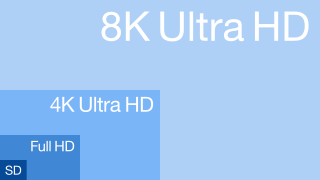 W
WUltra-high-definition television today includes 4K UHD and 8K UHD, which are two digital video formats with an aspect ratio of 16:9. These were first proposed by NHK Science & Technology Research Laboratories and later defined and approved by the International Telecommunication Union (ITU). It is a digital television (DTV) standard, and the successor to high-definition television (HDTV), which in turn was the successor to standard-definition television (SDTV).
 W
WVideo is an electronic medium for the recording, copying, playback, broadcasting, and display of moving visual media. Video was first developed for mechanical television systems, which were quickly replaced by cathode ray tube (CRT) systems which were later replaced by flat panel displays of several types.
 W
WYouView is a hybrid television platform in the United Kingdom developed by YouView TV Ltd., a partnership of four broadcasters, the BBC, ITV, Channel 4 and Channel 5; and three telecommunications operators, Arqiva, BT Group and TalkTalk Group.